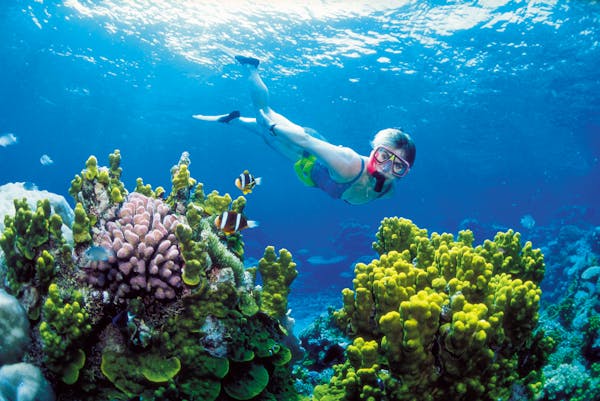Minnesotans typically ignore one of our most important resources -- our oceans -- yet these unfathomably large bodies of water make our lives possible and enjoyable.
All living things ultimately owe their existence to our oceans: That is where life originated. The food we eat either comes directly from oceans or is greatly influenced by them via ocean effects on water in the atmosphere and on the land.
Also, oceans are the "heat engines" of the Earth, absorbing and moderating the heat from the sun. Nearly half of the oxygen we breathe comes from photosynthesis in the oceans. Lastly, the oceans fill our lakes. As a limnologist (a scientist who studies freshwaters), I would be jobless without them.
Yet our oceans are threatened by ignorance, neglect and overuse. Our ignorance is due in a large part to the vastness of the oceans, which cover two-thirds of the Earth's surface. Satellites have enabled scientists to greatly increase our understanding of the oceans, but this is analogous to trying to understand the human body by looking only at the skin.
Yes, it helps, but if you want to really understand something, you need to examine its functional parts. The surface ( or "skin") of the ocean provides little information on what happens below. The oceans' average depth is about 3 miles, and maximum depth is about 7 miles.
To understand what is going on at these depths isn't cheap. It costs more than $10,000 a day to get to these parts of the ocean via a ship, and that's not counting all of the cost for the crew, scientists and instruments.
In the case of our oceans, ignorance is not bliss, it's just plain irresponsible. We now know that changes in the way that heat is distributed in the central Pacific, the so-called cycles of El Niño and La Niña, have important implications for weather patterns way up here in Minnesota and around the globe. They're at least in part responsible for current and historic droughts in East Africa and the southern United States.
Other scientific research on the oceans indicates that the Arctic Ocean is warming up at record rates, nearly two times as fast as at lower latitudes, causing the ice there to disappear. While less ice may be good for the Northern Hemisphere's shipping industry, a warmer Arctic and a warmer surface ocean in general means more water in the atmosphere and more extreme precipitation events.
For example, the recent 10-year drought in western Australia has been broken in the past two years by the wettest two-year period on record.
The likely culprit for our recent "climate on steroids" is multifaceted, but it is difficult for most scientists to deny that the more than 9 petagrams of carbon dioxide that we spew into the atmosphere each year via fossil-fuel burning and land-use changes does not play a role. A "petagram" is not something that most of us think about on a daily basis (although I'd love to express my weight in these units) but it is a huge number.
To borrow an analogy from Chris Sabine of the National Oceanic and Atmospheric Administration's Pacific Marine Environmental Laboratory, one petagram of coal would require 11 million railroad hopper cars; and a train carrying the 9 petagrams that humans emit annually to the atmosphere would be over one and a half million miles long and would wrap around the Earth 63 times.
Anthropogenic CO2 is affecting our oceans in other ways as well. Because carbon dioxide forms an acid when it is dissolved in water, the amount of acid in the oceans is increasing. A little over 2 petagrams of carbon dioxide are absorbed by the oceans every year, leading to higher acidity and affecting every living creature in the ocean, from sharks and whales to algae and coral reefs.
While Minnesota does an amazing job of growing crops and putting food on tables in America and around the world, this, too, has a cost that is manifest in the oceans. The nutrients from our farms and cities leak off the land and eventually into the northern Gulf of Mexico, leading to an increase in algal growth and causing the bottom waters to be devoid of oxygen, a condition known as hypoxia. Hypoxia is toxic to fish and other things we love to eat.
But this phenomenon is not restricted to the Gulf. As we do our best to feed more than 7 billion humans, hypoxic regions are popping up all over the globe, from the Baltic to the Adriatic and eastern Australia.
Although this all seems pretty bleak, emerging initiatives can serve as stepping stones to a more desirable future. Increasing tourism to our beautiful oceans necessitates that we keep them beautiful. The United Nations' Convention on the Law of the Sea regulates and negotiates disputes among nations, but unfortunately, the United States has never ratified it.
Marine protected areas provide important habitat, refuge and seed banks for surrounding regions. Both nongovernmental organizations and government agencies have focused efforts in educating us on sustainable fisheries so that we can make wiser choices at the supermarket.
So, although we Minnesotans are thousands of miles from the nearest ocean, we are strongly connected by way of the food we eat, the laws we make, the waste we produce and the climate we enjoy and/or endure.
----------------
Jim Cotner is a professor of freshwater ecology at the University of Minnesota.
The Star Tribune Editorial Board and the Minnesota International Center are partners in "Great Decisions," a monthly dialogue discussing foreign-policy topics. Want to join the conversation? Go to www.micglobe.org.
The courage to follow the evidence on transgender care

Republicans wanted a crackdown on Israel's critics. Columbia obliged.


